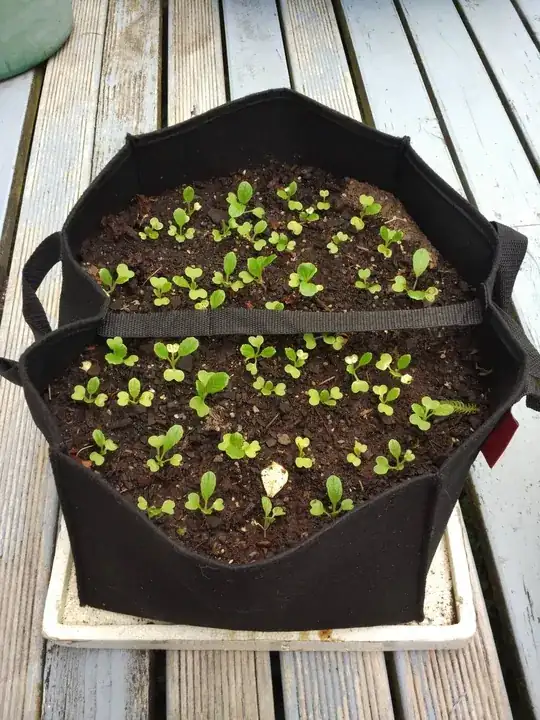I normally just buy in seedlings from big box stores since I am too disorganised to start my own seedlings in time. However, this year I did manage to get some seeds into the seed raising mix, and they have come up.
I've then pricked out the healthy ones and transplanted them into a flat, which is really just a 9-inch deep square grow bag which I partially filled with potting mix. I used a potting mix since they are used for containers being free draining, I had some bags of the stuff lying around, and it's free of seeds and hopefully other pathogens. But looking at the potting mix today just over a week later, it looks rather sterile and I wonder if I should really be trying to raise seedlings in such a substrate. I suspect it's too late now to change the mix without another shock to the seedlings.
Today in a fevered moment I did grab some wet worm-filled soil from the bottom of my year old compost heap, chucked it into some rain water in a bucket, and then poured the water over the "flat" hoping to inoculate the mix with some microfauna. So, the question is, is potting mix suited at all for raising seedlings, or should I add soil with something living in it to the mix before transplanting into it?

PS: The image is of bok choy seedlings. By life I mean bacteriae, protozoa, microarthropods, worms and optionally mycorrhizal fungi